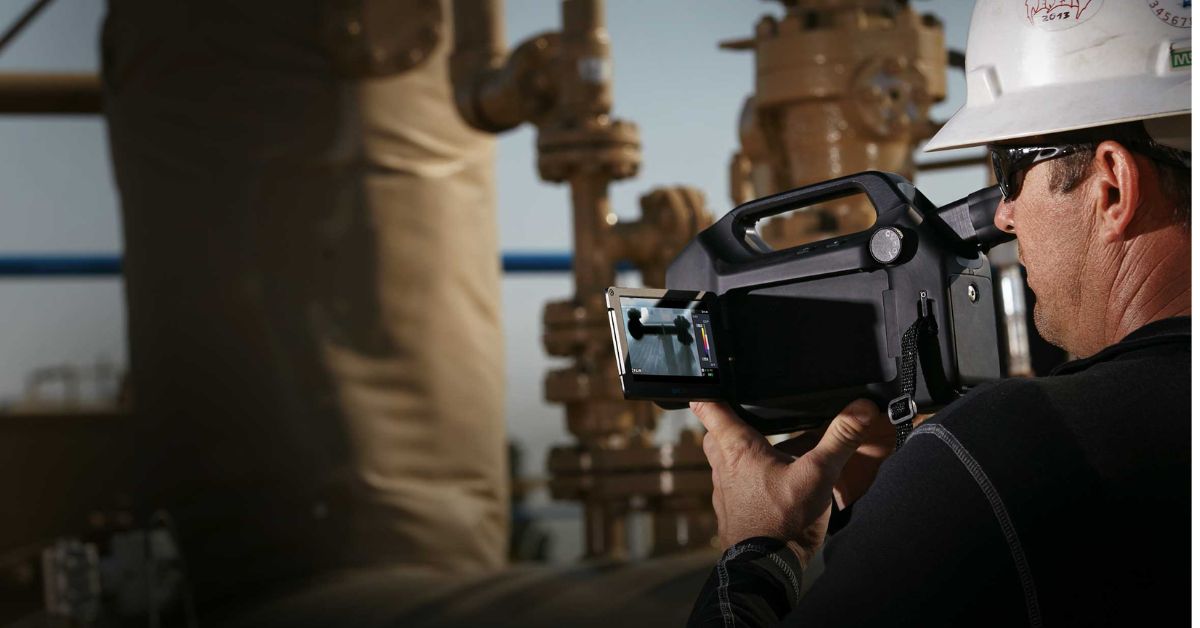A Lens on Appendix K: How the NSPS OOOOb Elevates the Use of Optical Gas Imaging for Leak Detection

This is part two in a series of blog posts that address changes to environmental protection rules from the US Environmental Protection Agency (EPA) concerning the use of optical gas imaging (OGI) cameras for the detection and mitigation of oil and gas emissions, including methane. Read part one here.
The December EPA ruling concerning oil and natural gas sector leak detection and repair (LDAR) at the global COP28 event in Dubai, United Arab Emirates, represents the culmination of major regulatory changes and guidelines for reducing emissions in the United States, which were first introduced in 2021 and 2022.
The first article in this blog series provided a broad overview of the New Source Performance Standards (NSPS) “OOOOb” and Emissions Guidelines (EG) OOOOc. This piece will focus specifically on “Appendix K” in NSPS OOOOb, which provides explicit guidance on the use of OGI cameras for LDAR inspection. While OGI has been in existence since 2005, the inclusion of OGI in the US EPA regulatory framework is fairly new. The technology was originally referenced in the 2008 Alternative Work Practice (AWP) to detect leaks from equipment, within the now historical (but still applicable) Method 21 standard. Then in 2015, the EPA designated OGI as the BSER (Best System of Emissions Reduction) within the NSPS OOOOa regulation. During this time, the oil and gas industry has utilized OGI as the primary technology or the literal "ground truth" information about LDAR.
How OGI Inspection is Evolving in the Field
With the introduction of Appendix K the industry now has simplified guidance on how to use an OGI camera in the field. This represents a significant change for the EPA as historically the agency has focused on the technology used for monitoring, not the operator. In short, the rule keys in on the training, auditing, daily procedures, and use cases of the operator, in addition to the capabilities of the technology. For this reason, some organizations may feel the rule is overly stringent and burdensome to the OGI user and limits the efficiency of OGI versus the before-mentioned Method 21 standard.
However, the Method 21 standard focuses on the detection of volatile organic compound (VOC) emissions from specific equipment types using a portable instrument and does not have these overly prescriptive requirements for use in the field. Even with these additions related to using OGI as a regulatory tool, they are both more effective and efficient in reducing emissions and meeting regulatory compliance.
However, within the Appendix K “referenced subpart,” the document highlights that it is only applicable to natural gas processing plants, at the moment. It also sets the framework for other regulatory activities in the future, such as for refineries, to potentially point to Appendix K in regulatory action. For the other parts of the supply chain that already have regulations tied to them (including well sites, centralized production facilities, and compressor stations that are covered by OOOOa or OOOOb), the use and applicability of an OGI camera has not changed. It is covered by §60.5397b within the regulation.

Specifics on OGI Camera Requirements
-
For those subject to Appendix K, it is now required that “field portable Infrared cameras” can image 75 percent of the gases in the composition of natural gas, not just methane. Furthermore, the detectable limits of the technology are as follows:
19 g/hr of methane and
29 g/hr of butane or 22 g/hr of propane -
Looking at the inspection process outlined within Appendix K, the EPA provides the following guidance:
GPS must be included in the survey and can be used to document the survey path.
The addition of required assurance of adequate Delta T in the field when using an OGI camera.
The requirement of a “senior operator,” defined as an individual who has 1,400 hours of field use and who is capable of conducting audits, trainings, and more.
Conduct required biennial (i.e., every two years) training, such as the OGI Fundamentals course from the Infrared Training Center.
Initial training, however, needs to occur in a classroom setting along with at least 30 hours of field training for those considered “non-senior operators.”
Appendix K also reduces some inspection burdens in comparison to previous iterations of the appendix. Although the rule requires an operator audit of two hours, the frequency is reduced from quarterly to semiannually. It also requires five minutes of rest per 30 minutes of continuous camera operation.
Although this blog post provides guidance on key points within Appendix K, operators should review the subpart in detail to help determine an inspection strategy and what new or additional inspection equipment, such as OGI thermal cameras, may be required.
For more information about Teledyne FLIR OGI cameras and technology, visit: https://www.flir.com/instruments/optical-gas-imaging/


